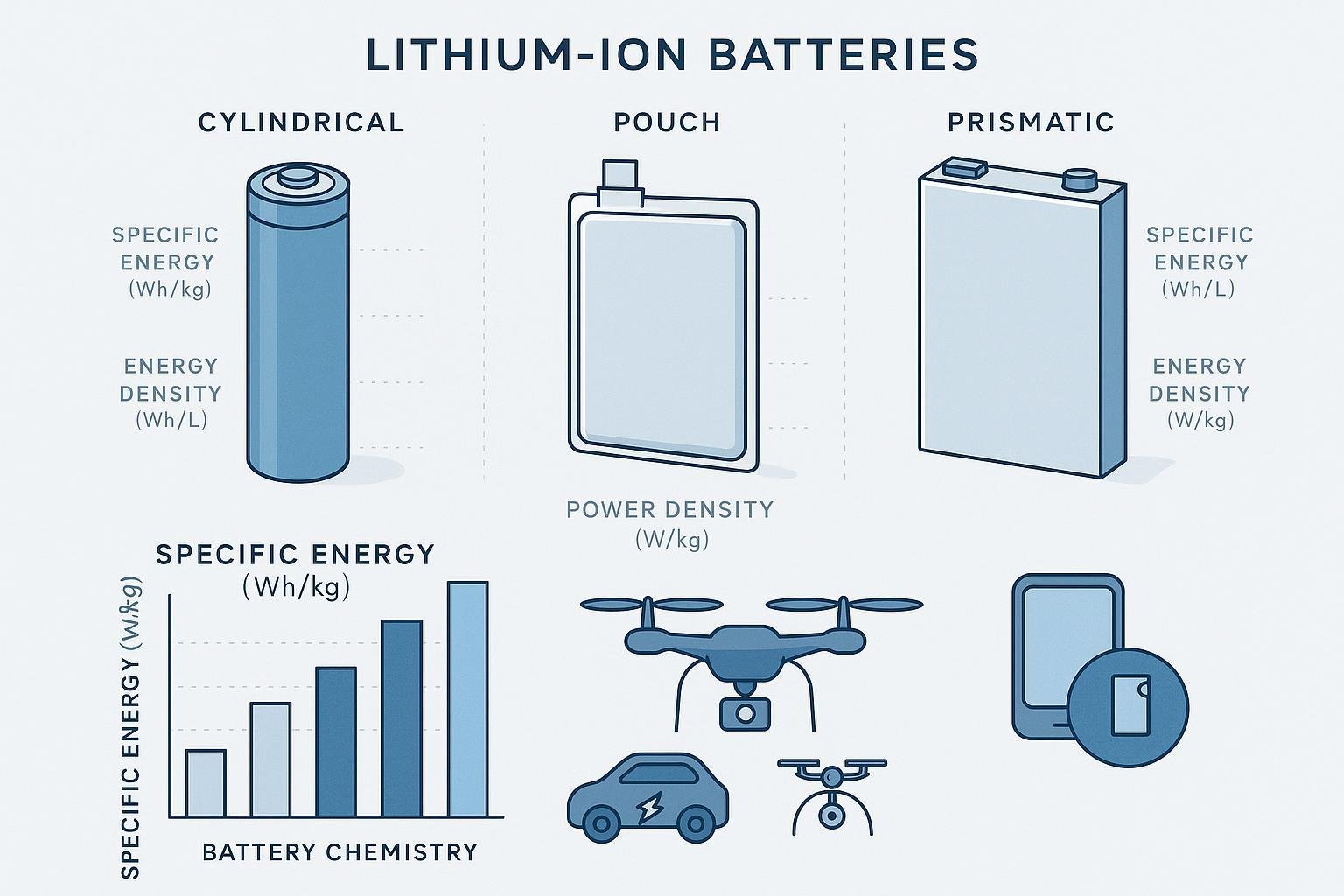
One-Sentence Definition
Specific energy is the amount of energy stored per unit mass in a battery or energy storage system, typically measured in watt-hours per kilogram (Wh/kg), indicating how much energy a battery delivers relative to its weight [Concorde Battery Glossary].
Detailed Explanation
Specific energy—also called gravimetric energy density—quantifies a battery’s total stored energy divided by its mass. The formal equation is:
Specific Energy (Wh/kg) = Total Energy Stored (Wh) / Mass (kg)
For example, a lithium-ion cell rated at 3.6V (nominal), 2Ah, and weighing 40g has a specific energy calculated as follows:
- Total energy: 3.6V × 2Ah = 7.2Wh
- Mass: 40g = 0.04kg
- Specific energy: 7.2Wh / 0.04kg = 180Wh/kg
This metric is crucial in industries where weight is a premium—such as electric vehicles, drones, and portable electronics—because a higher specific energy means more usable energy for the same mass.
It’s important to note the distinction: Specific energy is measured per unit mass (Wh/kg), while energy density refers to energy per unit volume (Wh/L). Power density (W/kg) measures how rapidly energy can be delivered, not how much total energy is stored.
Key Components and Influencing Factors
- Battery Chemistry: Lithium-ion (NMC/NCA) batteries offer higher specific energy (200–265 Wh/kg at cell level), compared to lead-acid (~30–50 Wh/kg) or LiFePO4 (90–160 Wh/kg) [Sinovoltaics].
- Design & Packaging: The practical specific energy of battery packs is always lower than single cells due to enclosures, electronic controls (e.g., BMS), and connectors.
- Operating Conditions: Extreme temperatures, discharge rate, and battery aging can reduce specific energy in real-world use.
| Chemistry | Typical Specific Energy (Wh/kg) |
|---|---|
| NMC/NCA Li-ion | 200–265 |
| LiFePO4 (LFP) | 90–160 |
| Lead-acid | 30–50 |
| Li-Sulfur (prototype) | 300+ |
Real-World Applications
- Electric Vehicles (EVs): Higher specific energy equals longer driving range per unit weight. Tesla and many leading EVs use NMC/NCA chemistries for this reason.
- Drones & Portable Devices: Lightweight, energy-rich batteries (Li-ion, Li-Polymer) power longer flights or runtimes—critical where every gram counts.
- Grid Storage: While stationary uses are less weight-sensitive, specific energy still affects shipping, installation, and footprint.
Case Example: Upgrading from a 120 Wh/kg (LFP) to 260 Wh/kg (NMC) battery in an e-bike would more than double its range at the same battery weight.
Related Concepts
- Energy Density (Wh/L): Energy per unit volume. Vital where size, not weight, is the limiting factor (e.g., smartphones).
- Power Density (W/kg): Maximum deliverable power per mass or volume—important for power tools and acceleration in vehicles.
- Cycle Life: How many charge/discharge cycles a battery survives while keeping useful capacity. High specific energy batteries often trade off on cycle life or safety.
- Battery Management System (BMS): Electronics ensuring safe, effective charging/discharging, impacting the realized specific energy at pack level.
Further Reading
Summary
Specific energy (Wh/kg) is a key metric for battery selection and technological advancement—especially in applications where every gram matters. Understanding its calculation, influencing factors, and distinction from related terms enables smarter battery design, safer product development, and better-informed purchasing decisions.

